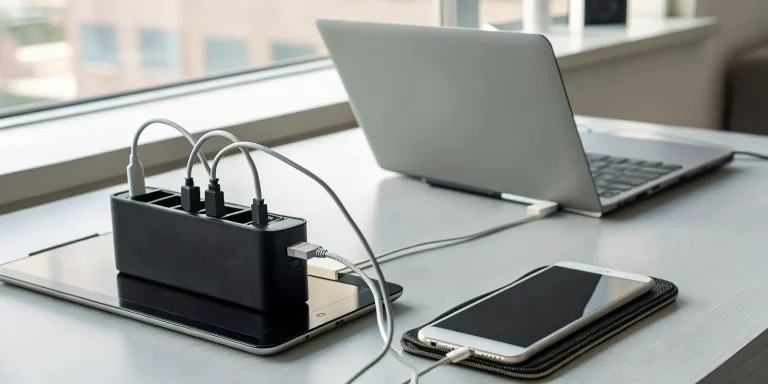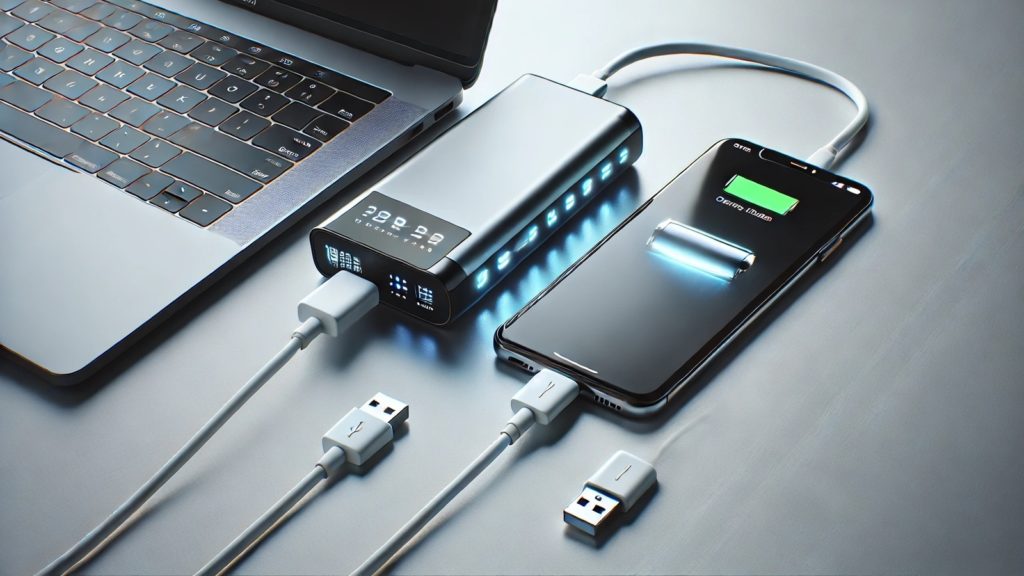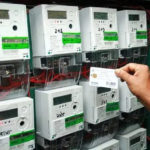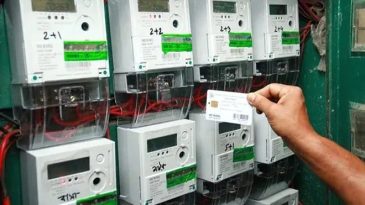- General
- Updated on October 17, 2025
How to Choose the Right Power Bank: Capacity, Ports, and Charging Speed Explained

Introduction
In a world where we rely on smartphones, tablets, laptops, and wireless accessories for almost everything, running out of battery can feel like being disconnected from life itself. Whether you’re a frequent traveler, a gamer, or simply someone who hates watching the battery percentage drop below 20%, a power bank is an essential accessory.
But with countless models, specifications, and features out there, how do you choose the right power bank? In this guide, we’ll break down everything you need to know — from capacity and charging speed to ports, safety features, and more — so you can make a smart and future-proof purchase.
How to Choose the Right Power Bank: Capacity, Ports, and Charging Speed Explained

1. Understanding Power Bank Capacity: What Does mAh Really Mean?
The first specification you’ll notice on any power bank is its capacity, usually measured in mAh (milliampere-hours). This number tells you how much energy the power bank can store — and consequently, how many times it can charge your device.
- 5,000–10,000 mAh: Ideal for light users or short trips. These compact models can fully charge most smartphones once or twice.
- 10,000–20,000 mAh: A great middle ground for daily use or travel. You can charge multiple devices or your phone 3–5 times.
- 20,000 mAh and above: Built for heavy users, travelers, or those who want to charge laptops or tablets on the go.
Keep in mind that the actual output capacity is often about 70–80% of the rated value due to energy loss during transfer. For example, a 10,000 mAh power bank might effectively deliver around 7,000–8,000 mAh to your device.
If you’re someone who uses multiple devices or spends long hours away from power outlets, investing in a high-capacity power bank is absolutely worth it.
2. Charging Speed: The Key to Convenience
Charging speed is where most people get confused — but it’s actually one of the most important factors. The speed depends on two things: output power (measured in watts) and charging technology.
- Standard Charging (5V/2A): Most basic power banks offer this. It’s fine for small devices but slower for modern smartphones.
- Fast Charging (18W–30W): Ideal for phones that support technologies like Qualcomm Quick Charge or USB Power Delivery (PD).
- High-Speed Charging (45W–100W): Designed for laptops, tablets, and large devices. If you use a MacBook or similar, look for a Power Delivery (PD) 60W+ rating.
Pro tip: Always match your power bank’s output to your device’s supported input. Using a 100W power bank with a phone that only supports 25W won’t harm it, but it won’t charge faster either.
3. The Importance of Port Selection
Power banks come with different ports — and the right combination can make your life much easier.
- USB-A Ports: The classic output port used in most older devices. Still common and reliable.
- USB-C Ports: The new standard for both input and output. It supports fast charging, bidirectional power, and is compatible with most modern gadgets.
- Micro-USB Ports: Mostly used for input (charging the power bank itself). Becoming outdated, but still present in some budget models.
- Lightning Ports: Rare, but convenient for Apple users who prefer a single charging cable for all devices.
If you own multiple devices, go for a multi-port power bank. For example, one with two USB-A ports and one USB-C PD port lets you charge a phone, tablet, and earbuds simultaneously — perfect for on-the-go lifestyles.
4. Input Power: Don’t Forget How Fast the Power Bank Recharges
While output speed matters for your devices, input speed determines how long it takes to recharge the power bank itself.
A standard 10,000 mAh power bank can take anywhere from 4 to 10 hours to recharge, depending on the input port and charger wattage.
Look for models that support USB-C PD input (18W–45W) — they recharge much faster than older Micro-USB ones. Some high-end models even support pass-through charging, meaning you can charge your power bank and your devices simultaneously.
5. Build Quality and Portability: Size Matters More Than You Think
Bigger doesn’t always mean better. While high-capacity power banks deliver more charges, they’re often heavier and bulkier — not ideal for daily commutes.
Here’s how to balance your needs:
- Slim and Lightweight (5,000–10,000 mAh): Great for everyday use. Fits in your pocket or small purse.
- Medium (10,000–20,000 mAh): The sweet spot for travelers who need extra power without sacrificing portability.
- Large (20,000 mAh+): Designed for professionals, campers, or tech enthusiasts who need multiple device charges.
Look for features like scratch-resistant casing, LED battery indicators, and anti-slip finishes for better durability and usability.
6. Safety Features You Shouldn’t Overlook
Not all power banks are created equal — and safety is non-negotiable. A poor-quality battery can overheat, swell, or even explode under certain conditions.
Make sure your power bank includes:
- Overcharge Protection: Prevents damage to your devices once they’re fully charged.
- Short Circuit Protection: Guards against electrical malfunctions.
- Temperature Control: Keeps the battery stable under heavy load.
- Certification Labels: Look for CE, RoHS, or UL certifications to ensure quality and compliance.
Investing in a reputable brand with proper safety mechanisms is always worth the extra cost.
7. Extra Features Worth Considering
Modern power banks are more than just portable batteries. Some come loaded with smart features that make them versatile companions.
- Wireless Charging: Perfect for Qi-enabled smartphones — just place your device on top and charge cord-free.
- Solar Panels: Great for outdoor enthusiasts who need renewable power.
- Digital Displays: Show remaining battery percentage precisely.
- Multiple Voltage Modes: Useful for charging cameras, drones, or laptops.
While these features aren’t essential, they can significantly improve your experience depending on your lifestyle.
8. Brand Reputation and Warranty
Stick to trusted brands known for quality and performance — like Anker, Xiaomi, Baseus, Belkin, and UGREEN. These companies use certified lithium-polymer or lithium-ion batteries that last longer and perform more consistently.
Also, always check the warranty period — a 12- to 24-month coverage is ideal for long-term reliability.
9. Matching Your Needs: A Quick Recap
If you’re still unsure what to buy, here’s a simple cheat sheet:
- For daily smartphone users: 10,000 mAh with 18W output (PD or QC 3.0 support).
- For travelers: 20,000 mAh+ with multiple ports and fast recharge capability.
- For laptop users: 45W–100W PD output with 20,000–30,000 mAh capacity.
- For outdoor adventures: Solar power bank with rugged design and waterproof casing.
Final Thoughts
Choosing the right power bank isn’t just about picking the one with the biggest number on the box — it’s about understanding your devices, your usage patterns, and your lifestyle. The best power bank for you is one that delivers reliable performance, charges quickly, fits comfortably in your bag, and — most importantly — keeps you connected when you need it most.
As our devices get smarter and more demanding, investing in a high-quality, feature-rich power bank is no longer optional — it’s essential. So the next time your phone hits 10%, you’ll be prepared to power through the day without skipping a beat.
Join the discussion
Related Articles
No results available
ResetTrending Articles


- General
- Updated on December 5, 2025


- General
- Updated on December 2, 2025


- General
- Updated on December 5, 2025


- General
- Updated on November 27, 2025


- Health
- Updated on November 24, 2025


- General
- Updated on November 24, 2025


- General
- Updated on November 19, 2025


- General
- Updated on November 19, 2025


- General
- Updated on November 14, 2025


- Tech
- Updated on November 12, 2025
No results available
Reset


